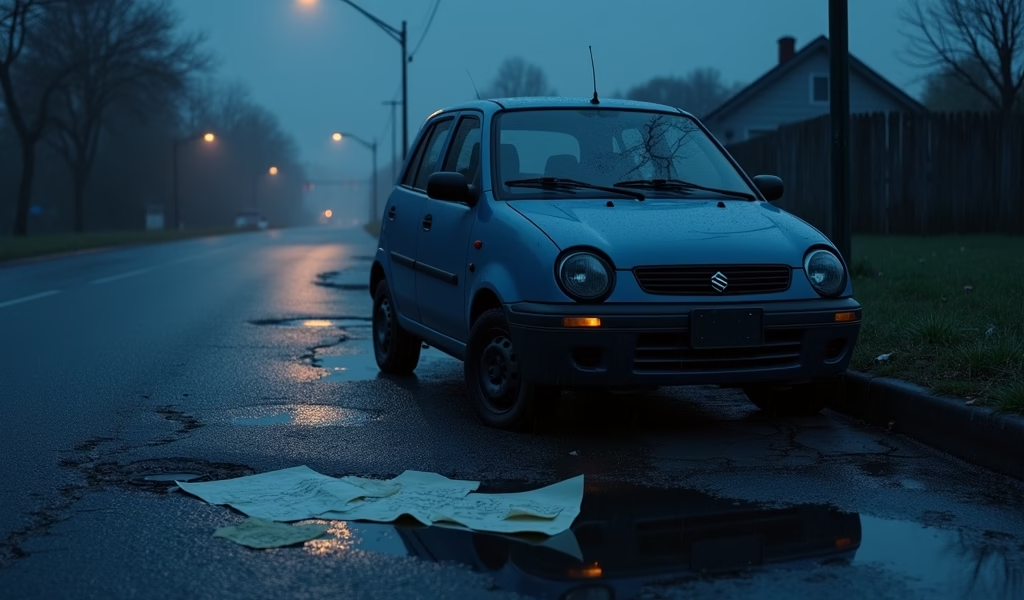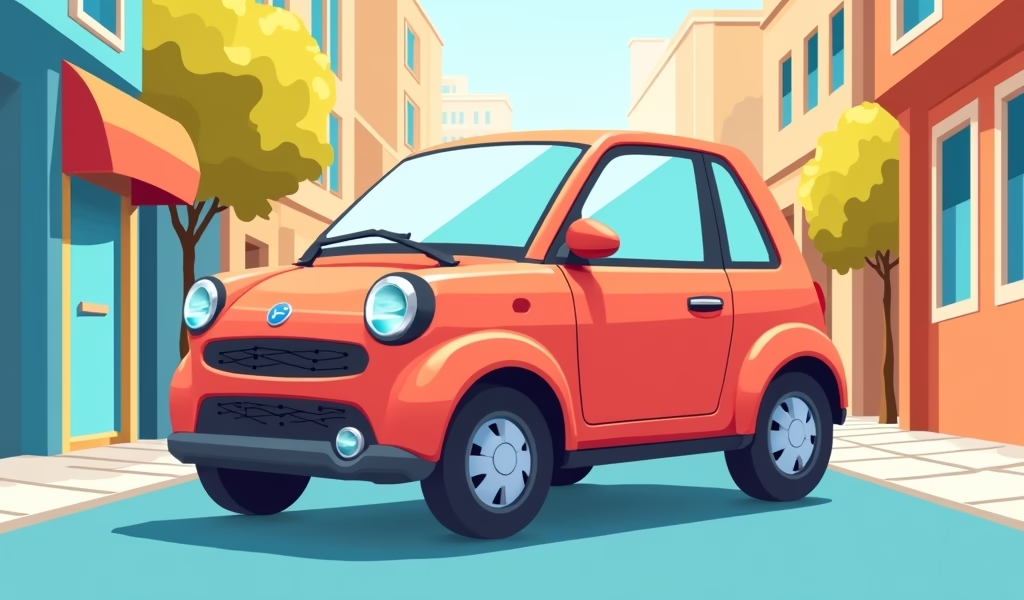Overview
The article examines why insurance is expensive for young drivers due to risk factors and inexperience, then outlines strategies to reduce costs, including choosing insurance companies that favor young drivers (Geico, State Farm, Progressive, USAA), taking advantage of discount programs, selecting appropriate coverage types, and making smart vehicle choices. It emphasizes that while minimum coverage may seem appealing for budget-conscious young drivers, adequate protection is essential to avoid financial disaster after accidents.
Table of Contents
- Why Insurance Is Expensive for Young Drivers
- Top Insurance Companies for Young Drivers
- Special Discount Programs for Young Drivers
- Policy Features to Consider
- Tips to Lower Your Insurance Premium
- Real Customer Reviews and Experiences
- Conclusion
- Frequently Asked Questions
Getting your driver’s license is a major milestone in life. The freedom of the open road, the independence of going where you want when you want – it’s exhilarating! But then comes the sobering reality: insurance costs for young drivers can be downright painful.
As an automotive specialist who’s helped countless young drivers navigate this challenge, I can tell you that finding cheap insurance for young drivers isn’t impossible – it just takes some know-how. The average young driver pays nearly double what more experienced drivers pay, but there are legitimate ways to bring those costs down.
Let’s break down why insurance is so expensive for younger drivers and explore practical solutions to help you save money without sacrificing important coverage. After all, being smart about your insurance is just as important as knowing how to change your oil or check your tire pressure.
Why Insurance Is Expensive for Young Drivers
I won’t sugarcoat it – insurance companies see young drivers as high-risk customers, and there’s data to back up their concerns. According to the Centers for Disease Control and Prevention, drivers aged 16-19 have crash rates nearly four times higher than drivers over 20. Insurance is all about risk assessment, and those statistics matter.
Three main factors drive up insurance costs for young drivers:
Lack of Driving Experience
Just like becoming a skilled mechanic takes years of hands-on practice, becoming a good driver requires experience. You need time to develop instincts, learn how to spot potential hazards, and master defensive driving techniques. Insurance companies know that these skills come with time and price policies accordingly.
Higher Risk Statistics
The numbers don’t lie. Young drivers are more likely to:
- Get into accidents (especially serious ones)
- File insurance claims
- Take more risks while driving
- Be affected by peer pressure when passengers are present
How Insurance Companies Calculate Risk
Insurers use complex algorithms that consider multiple factors beyond just age. They look at your gender (in most states), where you live, your credit history, the type of car you drive, and even your school grades. For young drivers without established driving records, these other factors become even more important.

Top Insurance Companies for Young Drivers
Not all insurance companies treat young drivers the same way. After reviewing rates and policies across the industry, I’ve identified the providers that consistently offer better deals for younger drivers.
Geico: Best Overall Value
Geico consistently offers competitive rates for drivers under 25. Their online quote system makes it easy to see exactly what affects your rate, and they offer substantial discounts for things like good grades and taking defensive driving courses. Their mobile app also makes it simple to manage your policy and file claims.
Average annual premium for young drivers: $2,200-$2,800
State Farm: Best for Students
If you’re hitting the books hard, State Farm might be your best bet. Their Good Student Discount can save you up to 25% if you maintain a B average or better. They also offer the Steer Clear program specifically for drivers under 25, which can lead to additional discounts after completion.
Average annual premium for young drivers: $2,400-$3,000
Progressive: Best for Customization
Progressive shines with their Name Your Price tool, which helps find policies that fit your budget. Their Snapshot program, which monitors your actual driving habits, can be especially beneficial for young drivers who practice safe driving. The company also offers small accident forgiveness, which can be a lifesaver for new drivers who make minor mistakes.
Average annual premium for young drivers: $2,300-$2,900
USAA: Best for Military Families
If you have military connections, USAA is tough to beat. They consistently offer rates 15-20% below market average for young drivers in military families. Their customer service is excellent, and they understand the unique challenges that military families face.
Average annual premium for young drivers: $1,900-$2,500
When shopping for cheap car insurance for new drivers, always get quotes from at least three of these companies to find your best personal rate.
Special Discount Programs for Young Drivers
One of my favorite parts of helping young drivers is showing them all the discount programs they might qualify for. Insurance companies offer these discounts because they identify lower-risk drivers – take advantage of as many as possible!
Good Student Discounts
This is the easiest money you’ll ever save. Most major insurers offer discounts of 10-25% for students with at least a B average (3.0 GPA). You’ll typically need to provide grade transcripts once or twice a year, but the savings are well worth the small effort.
Defensive Driving Course Discounts
Completing an approved defensive driving course can knock 5-15% off your premium with many insurance companies. These courses typically cost $50-$100 and can be completed online or in person. Besides the insurance discount, you’ll gain valuable skills that might help you avoid accidents altogether – that’s what I call a win-win.
Telematics/Usage-Based Insurance Options
These modern insurance options use technology to monitor your actual driving habits rather than lumping you in with statistical averages of all young drivers. Programs like Progressive’s Snapshot, State Farm’s Drive Safe & Save, and Allstate’s Drivewise can save safe drivers 30% or more.
The devices or apps track things like:
- How hard you brake and accelerate
- Whether you speed
- What times of day you typically drive
- How many miles you drive
If you’re confident in your driving skills, these programs can be your ticket to substantial savings.
Parent Policy Options
Often the most affordable option is remaining on a parent’s policy as an additional driver. This approach typically costs 50-80% less than getting your own policy. Just remember that your driving record will affect your parents’ rates, so drive carefully!
Policy Features to Consider
Getting the right coverage at the right price requires understanding what you’re actually buying. As a mechanic, I often compare this to car maintenance – you need to know which services are essential and which are just nice to have.
Minimum Coverage vs. Recommended Coverage
Every state has minimum required coverage levels, but these are rarely sufficient in a serious accident. The bare minimum might look tempting for budget-conscious young drivers, but consider:
- Minimum liability coverage often won’t fully cover medical bills in a serious accident
- Property damage minimums can be as low as $5,000 in some states – not enough to replace most vehicles
- No protection for your own vehicle with minimum coverage
A better approach for most young drivers is:
- 100/300/100 liability coverage (covering $100,000 per person, $300,000 per accident, and $100,000 in property damage)
- Collision and comprehensive coverage if your vehicle is worth more than $3,000
- Uninsured/underinsured motorist coverage matching your liability limits
Deductible Options
Your deductible is what you pay out of pocket before insurance kicks in. Higher deductibles mean lower premiums, but make sure you could actually afford to pay that deductible in an emergency.
Many young drivers find a sweet spot with:
- $500-$1,000 deductible for collision coverage
- $250-$500 deductible for comprehensive coverage
Additional Coverages Worth Considering
Some optional coverages are particularly valuable for young drivers:
- Roadside assistance (typically $5-$15 per month)
- Rental car reimbursement if your vehicle needs repairs
- Gap insurance if you have an auto loan

Tips to Lower Your Insurance Premium
Beyond choosing the right company and discounts, several strategies can help young drivers reduce their insurance costs. These are the tips I share with all my young customers looking for cheapest car insurance for new drivers under 25.
Vehicle Selection Considerations
The car you drive dramatically impacts your insurance costs. As someone who’s worked on countless vehicles, I can tell you that certain cars are simply more expensive to insure, especially for young drivers.
Young drivers should generally avoid:
- Sports cars and high-performance vehicles
- Brand new, expensive vehicles
- Cars with poor safety ratings
- Vehicles commonly targeted by thieves
Instead, look for:
- Mid-sized sedans with strong safety features
- Vehicles with lower repair costs
- Cars with anti-theft devices
- Models with good crash test ratings
According to Insurance Institute for Highway Safety, vehicles with top safety ratings can save you a bundle on insurance premiums.
Maintaining a Clean Driving Record
Nothing raises insurance rates faster than tickets and accidents. For young drivers, even a single speeding ticket can increase premiums by 20-40%.
Practical tips include:
- Using cruise control on highways
- Installing a speed alert app on your phone
- Always designating a driver when alcohol is involved
- Never texting while driving
Building Credit History
In most states, insurance companies use credit scores as a rating factor. Young drivers can build positive credit by:
- Becoming an authorized user on a parent’s credit card
- Getting a secured credit card with a small limit
- Always paying bills on time
- Keeping credit utilization low (under 30% of available credit)
Shopping Around and Comparison Strategies
Insurance rates vary dramatically between companies, especially for young drivers. Never accept your first quote without comparing options:
- Get at least 3-5 quotes before deciding
- Compare identical coverage levels across companies
- Ask specifically about all available discounts
- Re-shop your insurance yearly, as pricing algorithms change
Real Customer Reviews and Experiences
I’ve spoken with many young drivers about their insurance experiences. Here are some insights from real customers that might help you make better decisions:
“After adding the telematics device from Progressive, my rates dropped almost 25%. It was a bit weird knowing my driving was being monitored at first, but the savings were worth it.” – Miguel, 22
“State Farm’s good student discount saved me nearly $400 a year. All I had to do was send in my transcript each semester.” – Alyssa, 20
“I made the mistake of getting minimum coverage to save money and ended up with $8,000 in out-of-pocket costs after an accident. Definitely get more than the minimum if you can.” – Jackson, 24
Common praises centered around mobile apps, easy claims processes, and helpful agents who took time to explain options. Common complaints involved confusing policy language, unexpected rate increases, and difficulty reaching human representatives.
In satisfaction surveys, USAA, State Farm, and Amica consistently ranked highest among young drivers, while companies like Farmers and Liberty Mutual received lower marks specifically for their young driver rates.
Conclusion
Finding affordable insurance as a young driver isn’t impossible, though it does require some homework and strategy. Based on my years helping young drivers navigate the complicated world of auto insurance, I recommend:
- Start by getting quotes from Geico, Progressive, and State Farm (plus USAA if you qualify)
- Take advantage of all possible discounts, especially good student and defensive driving course discounts
- Consider telematics programs if you’re confident in your driving abilities
- Choose a car that’s insurance-friendly
- Get appropriate coverage – not just the minimum
- Shop around annually as your rates will likely decrease as you gain experience
Remember that cheap insurance for young drivers shouldn’t mean poor coverage. The goal is finding affordable protection that still gives you peace of mind on the road. Just like maintaining your car properly prevents expensive breakdowns, having adequate insurance prevents financial disasters after accidents.
With some research and the strategies outlined in this article, you can find coverage that won’t break the bank while still providing the protection you need. Drive safely, and remember that every year of accident-free driving brings you closer to more affordable rates!
Frequently Asked Questions
How much does insurance typically cost for a new driver?
The average annual premium for drivers under 25 is approximately $3,200, roughly double what experienced drivers pay. Costs vary significantly based on location, vehicle type, and individual factors like driving record and credit score.
Does my GPA really affect my insurance rate?
Yes, most major insurers offer discounts of 10-25% for students with at least a B average (3.0 GPA). This discount is one of the easiest ways for students to lower their premiums.
Will my rates automatically drop when I turn 25?
Not automatically, but most drivers see a significant decrease around age 25 if they have a clean record. Some companies gradually reduce rates starting around age 21 rather than waiting until 25.
Should I get my own policy or stay on my parents’ insurance?
From a purely financial perspective, staying on your parents’ policy is almost always cheaper. However, if you’ve moved out permanently or want complete control over your coverage, a separate policy might make sense.
Do I really need more than minimum coverage?
In most cases, yes. Minimum coverage requirements were set decades ago and haven’t kept pace with medical costs or vehicle values. One moderate accident could easily exceed minimum coverage limits.


Pingback: Young Driver Insurance: 5 Car Care Tips - knowsyourcar.com